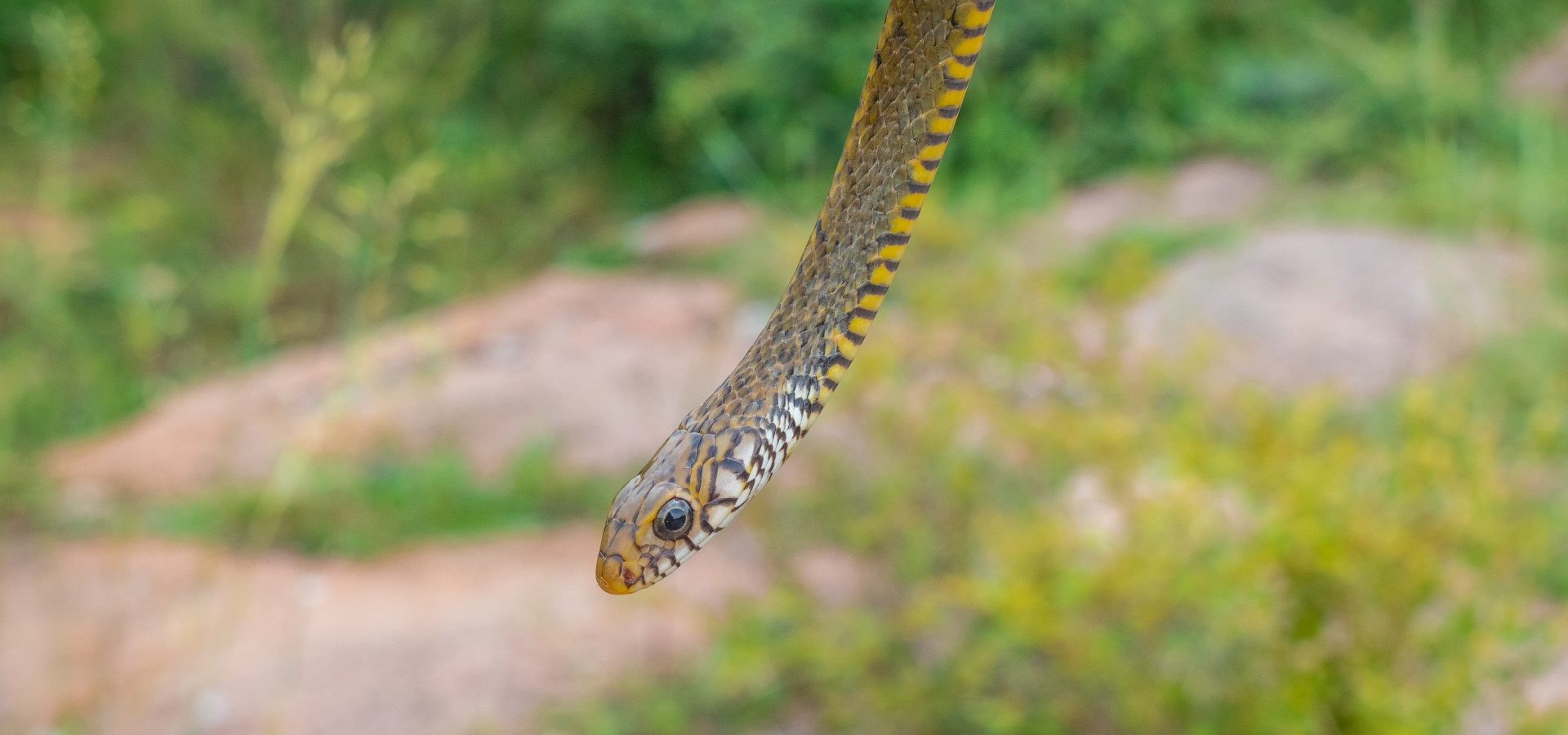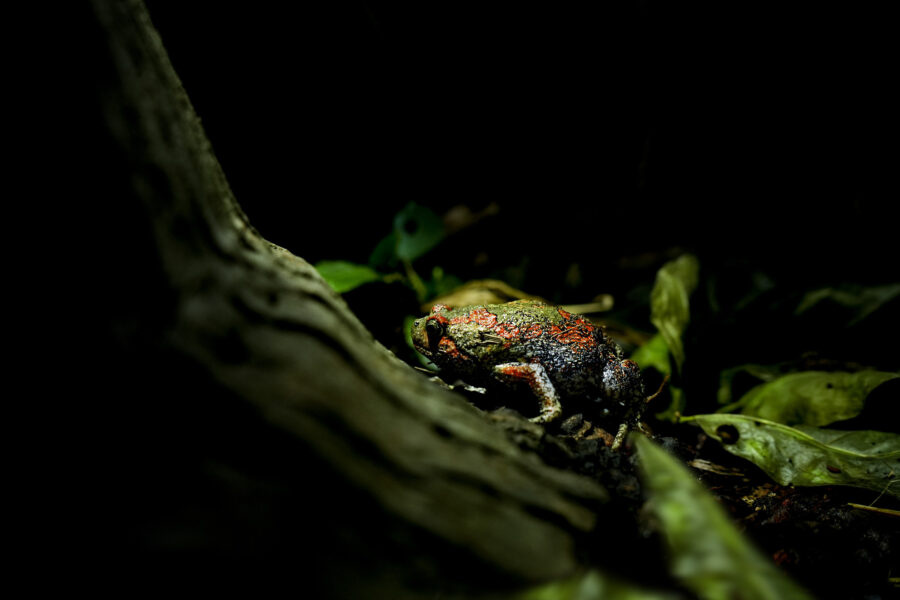As concrete jungles replace large swathes of forested land, many animals have taken to an urban lifestyle. Rat snakes are no different. As their preferred prey enter residential areas, these reptiles are close behind, making their homes in gardens, construction sites and crevices of large buildings. However, adaptability often becomes a double-edged sword.
Due to the unique challenges of living in an urban environment, many rat snakes become victims of human-animal conflict. People’s inability to distinguish venomous species from non-venomous ones further complicates the situation. Taxonomically speaking, the term ‘rat snake’ itself does not refer to a single family or genus. Rather, it is commonly used to denote non-venomous reptiles (spread across 15 genera) from the family Colubridae.
India is home to Ptyas mucosa, commonly known as the Indian rat snake, Oriental rat snake and (more locally) Dhaman. They are Wildlife SOS’ most commonly rescued reptiles across all four cities where we operate. In the month of May this year, our Rapid Response Units saved 30 of these magnificent reptiles from distress!
Evolution, Ecology, and Emergence in Cities
What is a rat snake? Herpetologists have come up with varying answers to these questions over time. Earlier, these reptiles were divided into two categories, the Old World and the New World rat snakes, based on whether they belong to the Eastern or Western Hemispheres respectively. However, recent consensus likens the New World rat snakes found in the US closer to the king snakes than the Old World rat snakes.
Rat snakes likely originated in tropical Asia during the Late Eocene period. Over time, they have become a vital part of the urban ecosystem, feasting on birds, insects, amphibians, eggs, lizards as well as rats, the delight for which led to the name of the snake. They kill using constriction, a method that involves tightly wrapping themselves around their prey to literally squeeze the life out of them.
Indian rat snakes, belonging to the Old World category, are essential in keeping the population of rats and other rodents in check. However, the inherent stigma against snakes often glosses over their usefulness in the public eye. It is also important to note that these reptiles do not consider humans their prey. Most snakes are generally shy and avoid confrontation with humans, unless their life is at stake!
Indian rat snakes are non-venomous by nature, and yet, this fact is not enough to save them from regular persecution. Their patterned skin, length and general appearance have caused many misguided individuals to mistake them for being the Indian cobra. This is ironic because the rat snake is one of the most favoured preys of the latter as well as many other carnivores, attesting to their invaluable role in the circle of life.
The urban jungle is no less perilous than actual forests for rat snakes. Citizens have spotted these reptiles resting inside engines, moving parts of automobiles, water drums, temples, historical monuments, shops, educational institutions and between the wires of electric cables.
Indian rat snakes can also be found within the residential areas of the Himalayas, and our Education Officer Ms. Aaliya Mir in Jammu and Kashmir conducts several challenging operations to rescue them!
Snakes in Peril
Rat snakes have taken our team members back to school! Over the course of the last few months, concerned citizens from Delhi’s educational institutions have reached out to us on our helpline. In one such case, a rat snake trapped inside a hole was spotted by a student from Jawaharlal Nehru University.
Another rat snake had entered the library at Sarvodaya Senior Secondary School. In both cases, timely calls helped us save the reptile.
One rat snake had climbed to the top of a 60-foot-tall tree. These reptiles are expert climbers and often travel to high places, but need extra assistance in getting back down. In this instance, our team sought help from the fire department for its hydraulic ladder. In another instance, a rat snake stuck between cable wires was rescued from Agra.
Open wells spell doom for wild animals of all shapes and sizes. A rat snake ended up inside an uncovered well near the Taj Mahal, from where it was safely recovered. Our veterinary team ensured that the animal was healthy before releasing it into its natural habitat.
However, not all snakes are so lucky. An injured rat snake was saved from Noida, where it had suffered multiple wounds from feral dog bites. Our vets wasted no time in conducting X-rays of the poor reptile. The animal is currently in our care, but will be released into the wild once deemed fit.
We have recently received several calls from anxious residents of Tughlaq Road, Burari and many places within Delhi during the monsoon season. We need to ensure that the misplaced fear of snakes does not hurt these reptiles in question. Most snakes are more intimidated by us than we are of them! They have very good reason to be, as the cruel and abusive practice of snake-charming haunts these reptiles. Snakes captured for this purpose are inflicted with long-lasting bodily injuries.
Schedule II of the Wildlife (Protection) Act, 1972 protects Indian rat snakes, implying that any injury or harassment to these animals by human hands attracts strict consequences. However, even in the present day, people find loopholes to exploit these voiceless animals. Very recently, a seizure in Delhi and Agra led to the recovery of 69 snakes, including a rat snake that had mongoose hair stitched across its body.
You have Spotted a Rat Snake. Now what?
Our rescue and rehabilitation efforts follow a two-pronged approach for all animals, including those that fall under non-charismatic species. While our skilled veterinarians and handlers safely extricate these animals from conflict situations, conflict mitigation workshops and awareness sessions dispel myths and ignorance that surround wildlife.
Our Rapid Response Units rely heavily on timely information to reach the animal in distress. In case you spot a snake in your vicinity and as a concerned citizen, you wish to help it out, what should you do? Save and share the following guidelines among your peers!
Once stigmatised and under threat from misguided violence, the rat snake is seeing better days owing to Wildlife SOS’ tireless myth-busting efforts. Snakes and human beings remain in an uneasy balance. Non-venomous snakes like trinkets, sand boas and rat snakes are often difficult to distinguish from the venomous ones and ignorance has led to their mistreatment. Therefore, the ability to make the distinction is crucial.
Our Reptiles Group on Facebook is dedicated to offering insights to help you distinguish snakes by identifying them. However, if you lock eyes with a snake and get no time to delve into the nitty-gritty of identification, it would be best to first step away from the snake, and inform professionals as soon as possible.
Regardless of whether you can or cannot identify the snake, do not attempt to handle the situation alone. Reach out to your nearest animal welfare organisation. If you are based in the following cities, be sure to call our 24X7 operative helplines:
Delhi NCR: +91-9871963535
Agra, Uttar Pradesh: +91-9917109666
Vadodara, Gujarat: +91-9825011117
Srinagar, Jammu and Kashmir: +91-7006692300/ +91-9419778280





